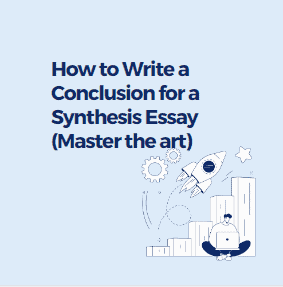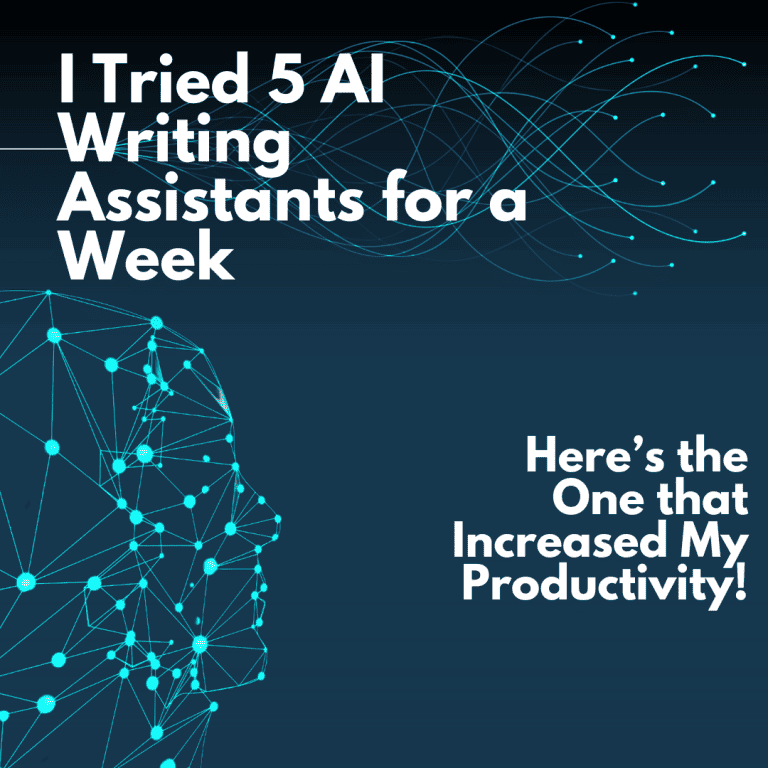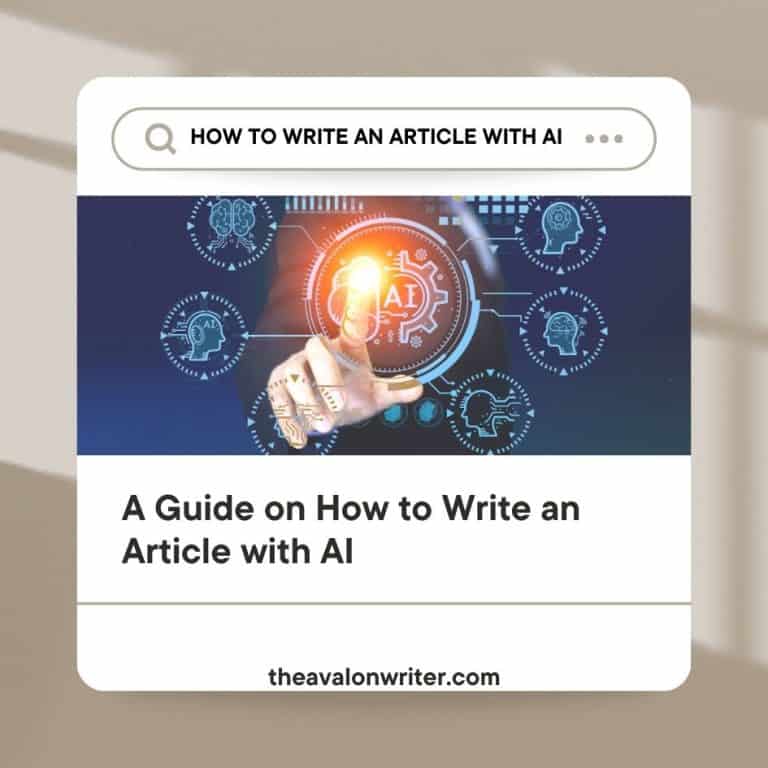Step-by-Step Guide to Executing The Right Content Marketing Strategy
What is a Content Marketing Strategy?
When it comes to marketing, content is king. But creating great blogs, videos, and social media posts that connect with people takes strategy.
What does that mean exactly? A solid content strategy is a plan for creating and publishing killer content that drives real business results. It’s how you’ll attract your ideal audience, engage them, and guide them into becoming loyal brand advocates.
Whether you want to increase awareness, boost conversions, or stand out from competitors – content makes it happen! But only if it speaks directly to what your audience cares about and is searching for.
That’s why taking time to analyze their pain points, interests, and ever-changing behaviours is key. Then, you can develop a content plan tailored to their needs that covers topics, formats, tones, and platforms that will resonate.
It’s not just about churning out content for the sake of it. Companies that are seeing success allow their target audience’s wants and needs to shape an agile strategy focused on delivering value through education and entertainment at every touchpoint.
So, a solid content strategy is the compass for creating content that attracts, engages, and delights to build trust and loyalty over time. In such a crowded marketplace, focusing on your audience’s needs in this way sets thriving brands apart.
Why Do You Need a Content Marketing Strategy?
Every successful marketing strategy must incorporate high-quality content in today’s digital world. With 70% of B2C companies embracing content strategies, ensure you have a solid one in place to match the competition.

But here’s an eye-opening stat: Of those with content plans, 59% admit they’ve had to shift gears at least somewhat since COVID-19 entered the chat. This shows that now more than ever, taking an adaptable, audience-first approach matters when creating content that converts.
The brands that win mindshare and loyalty are laser-focused on providing value to customers via timely, relevant content. The content must resonate whether that means rethinking tone, topics, formats, or platforms.
Why? Because content builds awareness, trust and community. It’s there for prospects throughout their journey – when searching for solutions, evaluating options, and beyond. Leveraging content allows you to attract and nurture leads through education and engagement.
And not just one-off efforts either. By taking a strategic approach to development and distribution, evergreen content continues to rank and convert long-term. This means more scalable leads and pipelines you can count on, freeing you up to experiment with new initiatives.
In essence, a sound content plan is the foundation for various revenue-driving activities—from SEO to ads and beyond. It has substantial weight, so most successful brands rely on it as a core tactic.
Get to Know Your Audience Through Buyer Personas
You can’t create content for everyone. The key is identifying your target audience—the people most likely to buy what you’re selling. These are your buyer personas.
When deeply understanding your personas, you can tailor content to their problems, interests, and preferences. This level of personalization boosts engagement.
Key Takeaways:
- Define Clear Goals and Target Personas Before creating content, clearly identify your target audience personas and set measurable traffic, lead, and sales goals. This focus will drive impact.
- Audit Existing Content Conduct an audit assessing the performance of current content. Identify evergreen winners, gaps in topics, and opportunities to repurpose and improve assets.
- Map Content Formats to Buyer Journeys. Strategically tailor content types and topics to each stage of your customer journey. Educate and attract newcomers, address concerns during research stages, and convince those ready to buy.
- Promote and Analyze Performance Staying organized with an editorial calendar allows consistent promotion across channels. Continuously track analytics to refine content and channels driving the best conversions and engagement.
- Consistent Execution Compounds Results
Committing long-term to a structured research, creation and optimization process unlocks the full power of inbound content marketing over time.
Collecting Personal Data
Start by gathering demographic data on existing customers. Analyze metrics like age, gender, location, income level, job title, and industry. Look for trends and commonalities across your best customers.
Social listening also provides insight. Follow relevant hashtags and conversations to learn what prospects care about. Pay attention to the language they use and the topics discussed.
Surveys Offer Direct Input
For more direct input, survey customers and prospects. Ask about their challenges, information sources, and motivations. This gives you data straight from the source to shape your personas.
Craft Detailed Persona Profiles
With research complete, build one-page profiles for each persona that cover details like:
- Key demographics
- Common objections
- Preferred content types
- Motivations
Refer back regularly as you create content. Keep personas aligned with your audience as it evolves.
The Powerful Payoff of Content Marketing
Why invest time and money into content marketing? What’s really in it for me?
29% of marketers actively use content marketing. (HubSpot State of Marketing Report, 2024)
Let’s start with the big-picture impact. High-quality content positions you as an industry expert and thought leader. You get to shape the conversations happening in your niche.
This authority and mindshare then convert into tangible business growth. Content marketing improves your search rankings, driving more organic traffic to your site over time. Readers eventually convert into leads and buyers.
Unlike advertising, you own the content platform. Once a blog post or video is published, it can attract interest for years. The content remains under your control – you get to convey the messages and brand voice you want.
In short, content marketing puts you in the driver’s seat. You get to steer your brand awareness, website traffic, and lead generation towards your goals.
The payoff for prioritizing content creation is huge. And the leads it generates are of higher quality since they come to you.
How to Create a Content Strategy (7 Key Steps)

1. Set Clear Goals to Drive Results
Before mapping out your content plan, clearly define what you want to accomplish. Well-defined goals are like a compass that keeps your entire strategy on course.
Start by precisely identifying who you want to reach with your content. Get very specific on their demographics, interests, and behaviours. This clarity helps ensure your content resonates with those who matter most.
Next, set measurable targets for success—do you want more site traffic? More email subscribers? More sales inquiries? Define each goal numerically, with a specific timeline.
For example, you might aim for a 10% bump in overall site traffic within six months or gain 50 new email newsletter subscribers per month. Quantifiable objectives like these keep your efforts focused.
Use the tried-and-true SMART framework here too. Effective goals are Specific, Measurable, Achievable, Relevant, and Time-bound. If a goal doesn’t meet most of those criteria, get back to the drawing board.
Setting clear objectives lights the path ahead. You’ll drive real results instead of just producing content and hoping for the best. Know precisely what you want before getting started.
2. Get to Know Your Ideal Customers
Understanding exactly who you want to reach with your content is vital. You need to get into the minds of your ideal buyers and what makes them tick.
Start by looking at the objective data. Collect website analytics on traffic demographics like age, gender, income level, education level, and location. Social media stats provide useful psychographic details too.
But you can’t rely solely on the numbers to build a multidimensional profile. Actively collect customer feedback through quick surveys, interviews, and conversations. Learn about their problems, questions, hopes, fears, and desires.
Then synthesize the research into a few archetypal buyer personas. Give them names, photos, backstories, motivations, and objections. These will guide your content creation and distribution strategies.
Keep iterating as you gather more intel over time. Treat your personas as real people, not faceless targets. Building authentic understanding here is the secret sauce behind content that truly resonates.
3. Take Stock of What’s Already Working
Before creating new content, audit what you already have out there. The data will reveal hot spots to double down on and weak points needing a refresh.
Start by using a tool like Screaming Frog to crawl your site and build a spreadsheet with all page titles, URLs and metadata. This inventory provides an eagle-eye view of your overall content landscape.
Next, assess the engagement and effectiveness of each content asset. Check metrics like social shares, backlinks and organic search rankings. See which posts attract the most interest over time.
Also, identify major gaps where you can better align with audience interests or keywords. Look for questions your buyers are asking that you haven’t adequately addressed.
This audit showcases your most evergreen, high-performing content. Revisiting these winners can spark ideas for new spin-off content that builds on proven formulas.
Repurposing top assets into new formats like videos or podcasts is another smart growth lever to pull, too.
In short, a systematic content audit lends invaluable context for planning what new content to produce next. You get to start from a position of strength.
4. Get the Right Tech Foundation in Place
Invest time upfront in vetting your content technology stack before executing your new content plans. The right CMS and infrastructure will make content creation and optimization much easier.
Start by outlining your must-have features. Do you need an intuitive, customizable interface? Robust SEO capabilities? Strong multimedia support? Define your functional requirements.
Then, explore CMS options like WordPress, HubSpot, Drupal and more. Weigh pros and cons around flexibility, scalability and ease of use. Don’t get swayed by bells and whistles you won’t use.
Once selected, develop a thoughtful content governance model. Document guidelines for how content is researched, written, approved, and distributed on your new CMS. Establish processes for sunsetting outdated assets down the road.
Having the wrong foundation wastes resources and hampers results. But the right CMS liberates your team to produce content that efficiently improves your KPIs. Invest time upfront to make the best choice.
5. Map Out Content to Each Buyer’s Journey Stage
Not all content is created equal. Different formats, lengths and styles serve distinct purposes. The key is mapping content to each phase of your customer’s journey.
To attract newcomers, start with broad educational articles and ebooks. Use search data to identify gaps and questions about industry terminology and basics.
Then, create focused comparisons and action-oriented checklists for those evaluating solutions. Case studies work well here, showing how you’ve solved problems for others.
Finally, produce content specifically for those ready to buy from you. ROI calculators, pricing guides, and product FAQs help lead qualified prospects to convert.
Of course, you’ll need the full mix – blogs, videos, podcasts, infographics and more. But organize them thoughtfully based on where readers are in their journey. Meet them with the right content at the right time.
This buyer-centric approach to planning content drives better engagement and conversion over the long term.
6. Spark Your Creativity to Uncover Killer Concepts
With clear goals set, research done, and infrastructure in place, the fun begins – brainstorming tons of fresh content ideas! This step taps into your creativity. Get the juices flowing with these tips:
- Gather your team and let everyone contribute ideas for 10 minutes. No judgment here! Use digital whiteboarding to capture all suggestions. Build on others’ concepts with related ideas that pop into your head.
- Review the master list and consolidate it based on themes and potential reach/impact. Rank the finalists by:
- Effort level
- Priority
- Which buyer persona does it map to
- Now, conduct keyword research on your top ideas. See what search volumes exist and how competitors are ranking. This grounds your creative concepts in strategic viability.
- Run this creative brainstorming process monthly to stock your editorial calendar.
7. Keep Content Flowing to Your Audience
Congratulations – your content creation engine is humming! But don’t lose momentum once assets go live. Ongoing promotion and optimizations will amplify the impact over time.
Stay organized by developing an editorial calendar that maps out what content is published when across your blog and other channels. Coordinate internal teams and external partners around this schedule.
“New research reveals that purpose-driven companies are becoming a top priority for consumers worldwide. Accenture found that 63% of global consumers prefer to purchase goods and services from brands that share and promote their values.”
This suggests a significant shift, as more consumers abandon companies that do not demonstrate a commitment to a purpose that aligns with their beliefs. The study reflects consumers’ preference to direct their spending toward brands that stand for more than just making profits but rather aim to represent social causes and issues that resonate with individuals’ principles.
Of course, keep mining your analytics, too. See which topics, formats and channels drive the most conversions and shares. Then, double down on what works and refine what doesn’t.
This distribute-analyze-optimize flywheel will compound results month over month. However, listening to performance data and responding appropriately and actively requires diligence. Stay nimble and find ways to get your content in front of more eyeballs.
AI in Developing your Content Strategy
With AI and Automation, you can use AI to help make this process efficient and easy to execute. If you use AI and know how to use it effectively, you can create a content strategy within minutes. We have reviewed various research data to educate you on using AI to help create your Content Strategy.
The Future is Here: AI is Your New Secret Weapon for Content Domination
Creating standout content constantly can be an uphill battle. Between writer’s block, limited resources, and not having enough hours in the day, even the most creative marketing teams struggle with this.
But what if you had a tireless AI assistant who could crank out insightful drafts and unique ideas on command?
AI tools like copywriters and meta-tag generators save you tons of grunt work through automated drafting and research. This allows you to focus on other strategies, messaging, and promotion.
- “According to projections from Statista, the global artificial intelligence market is growing rapidly, expected to reach $305.9 billion in 2024. Fueled by increased adoption of AI solutions, Statista forecasts an annual growth rate of 15.83% between 2024-2030.”
- “This would result in the market ballooning to over $738.8 billion by the decade’s end. Currently the United States holds the largest share at $106.5 billion, though all global regions are seeing spikes in AI spending across industries.”
What is an AI-Powered Content Strategy?
An AI-powered content strategy infuses artificial intelligence and machine learning into each stage of planning, creating, and sharing killer content. Rather than replacing humans, AI gives your marketing team superpowers through automation and data-fueled recommendations, helping them be exponentially more efficient and effective.
For starters, AI tools can generate rough draft blog posts or social captions in seconds based on a few key inputs from you. This raw material accelerates the front-end workflow so your team can focus energy on proofreading or taking pieces to the next level.
Intelligent algorithms also study your audiences’ interests, needs, and characteristics to recommend tailored messaging and topics with key segments. Your content pipeline stays tailored precisely to what moves each buyer persona.
In addition, deep learning models rapidly analyze the data from your past campaigns and the current digital landscape to suggest site pages, content formats, and promotion plans with the best chance of performance based on your KPIs.
Lastly, AI continuously optimizes published content in real time based on engagement analytics to improve consumption and sharing.
- A recent Insider Intelligence market survey found that 55% of marketers leverage artificial intelligence for content ideation, underlining AI’s value in spurring creative strategies and topics. 46% of respondents believed AI can actively enhance human creativity.
- The data also showed 45% are utilizing AI-powered consumer insights to better understand trends and target audiences, with another 38% viewing AI implementation as a key driver for business growth. This showcases critical applications in customer analysis, creative amplification and overall market intelligence for data-driven expansion.
How to develop an AI-powered content strategy:
Step 1: Define your goals and target audience.
Laser-Focus Your Strategy with Clear Goals and Audience Guardrails
Kicking off an amplified content strategy starts with the basics – establishing solid goals and audience parameters. Doing so gives AI direction rather than just letting it run loose.
Be very specific in defining what you want to achieve, like increasing brand awareness by 15% or generating 100 new leads monthly. Quantifiable objectives provide AI with clear success metrics to optimize content around mathematically.
Speaking of optimization, AI excels at granularly understanding whatever audience you point it at – from analyzing demographics and psychographics to mapping subtleties in sentiment and engagement over time.
Tools like AcuityAudience intake a sample of your customer data and output detailed buyer personas in minutes. Or integrate chatbot trackers on your site to gather prospect interactions for analysis.
This foundational layer of goals and audience targeting makes your AI content assistant productive on day one. So before rushing into the glamorous stuff, nail down these basics.
Step 2: Leverage AI for content creation.
Let AI Take On the Creative Grunt Work
The most hands-on value AI brings is transforming your team into hyper-efficient content creation machines. The right implementation automates lower-value aspects of production while enhancing human creativity and judgment.
For example, tools like HubSpot’s Autocontent Generator ask a few questions about your audience interests and preferred tone, then suggest high-potential titles and social post drafts tailored precisely to those preferences. This amplification of your team’s first ideas keeps new content flowing swiftly.
Other platforms like Rytr input a content goal brief and spit back a custom outline mapping topics and narrative flow – an instant starting point for drafting you can tweak rather than starting with a blank page. Natural language generation takes care of initial research and organization.
Artificial neural networks are even unlocking new creative potential like visuals and infographic design. Rather than manually building charts and images, prompt-based platforms instantly generate polished graphics tailored to your messaging needs.
The key is strategically offloading grunt work to AI while leveraging innately human strengths like emotion, nuance, and judgment during refinement. Finding this force multiplier balance accelerates results. What manual steps can you automate next?
Step 3: Optimize content for search engines and audiences.
Tap Your Human Superpower for Audience Resonance
With lightning-fast content drafting unlocked, don’t overlook crafting your signature spin and polish during refinement. This stage calls upon distinctly human creative finesse.
Lean on your team’s instincts and expertise to shape machine-generated prose into messages that pop. Though gifted at cranking out word count, even the most advanced AI lacks the emotional intuition to build true audience rapport all on its own.
So embellish dry paragraphs with vivid analogies, inject humor into overly-formal diction, and reshape logical prose into mini narratives that compel rather than just inform. Polish the content diamond in your unique voice.
You can also direct tools like MarketMuse or INK Project to optimize draft posts for SEO consistency. But take time reviewing keyword integration and links to keep search optimization smooth while protecting page readability.
The synergy of machine efficiency and human artistry lifts results higher than either could alone. AI brings the raw horsepower while your team provides the creative steering. Finding this balance accelerates contentbreakthroughs.
Step 4: Analyze and improve your content strategy.
Continuous Analysis and Learning Keep Content Sharp
Just like a savvy human marketer, the key to long-term AI impact is the ability to analyze results and continuously improve. The performance data from your expanded content portfolio provides invaluable learnings.
Platforms like Atoms pull in metrics on all your productions from Google Analytics, social channels, email platforms and beyond. Granular visibility on consumption and conversions allows tweaking distribution channels, subjects, styles and more to optimize engagement.
Algorithmic assistants also learn uniquely from each piece of content, profiling attributes around top performers vs. laggards. These insights feed back into content creation tools, with AI recommending better topics, formats, and promotion plans customized to your audience based on past success.
It’s a glorious upward spiral – more content provides more data, which translates into smarter content. Rinse and repeat. Before you know it, your strategy runs like a well-oiled machine fine-tuned to crush objectives. But it all starts with closely tracking analytics and being willing to make frequent small adjustments.
The key is committing to continuous analysis and learning powered by AI. This perpetually rising creative strategy will leave competitors and outdated marketing tactics in the dust!
You Now Have the Blueprint to Win with Content
Let’s discuss why a solid content strategy is mission-critical for business growth.
First, your audience expects valuable content. They reward brands delivering consistent education and insight by paying attention and buying more over time.
Second, a strong framework drives results. Defining your goals, ideal buyers, and plan keeps your efforts laser-focused on business impact vs. simply publishing random content.
Lastly, diligent execution and distribution allow your hard work to shine. Promoting well-crafted content across the right channels and analyzing data leads to better performance month after month.
The components covered in this blueprint – research, ideation, creation, and optimization – unlock the full power of content. Put these best practices in motion for your brand and prepare to achieve impressive outcomes with inbound marketing!
Ready to build your content engine? Grab our free content strategy toolkit to accelerate your progress. It distils the most important frameworks, templates and tools covered today into one convenient guide to help you get results faster. Now, get out there and start creating content that moves audiences!







